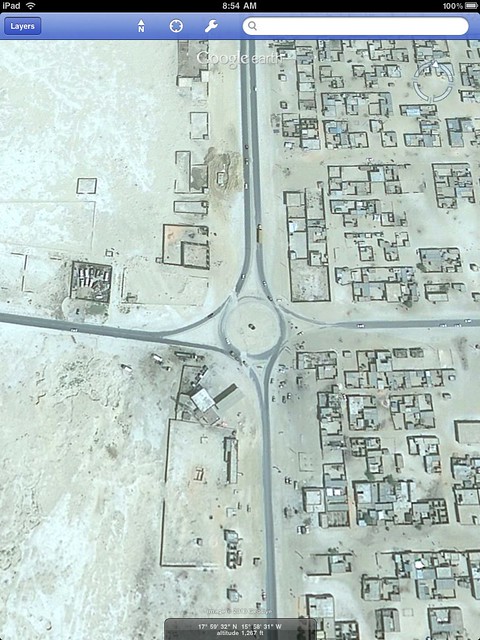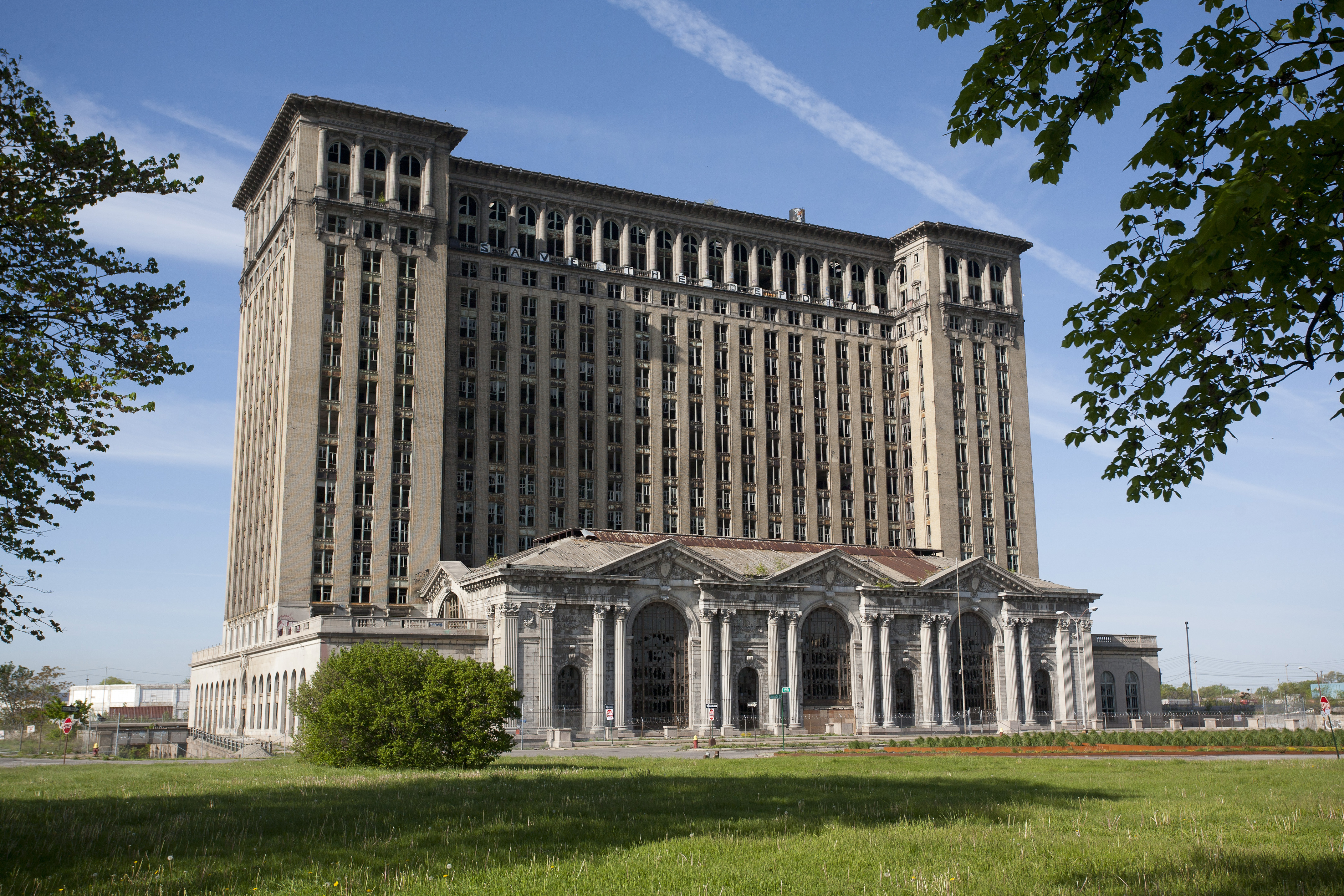The Five Themes of Geography brought clarity to school teachers everywhere in an otherwise sprawling set of geographic concepts. While I maintain that geography, in a broad sense, can include anything, I've concluded that the CONCEPT of place is not given adequate consideration in our geographic lexicon.
My field, Urban Planning takes consideration of Place to the next level. I'd like to begin capitalizing Place in this sense. I've always wanted to create new conventions anyway.
We're taught that humans interact with the environment and that there are numerous cultural considerations that go with that, but what is rarely discussed is the emotional interaction with places. The thoughts, the history, the sense of being one gets as they exist as PART of a Place. It's also important to think of a Place over time and that ones existence in that Place is perpetually fleeting. The idea is that a Place is the sum of the parts of the people that create it.
So what the heck am I talking about?
The Michigan Central Train Station is one of the most beautiful structures around. Its majestic art deco lines jump up at the sky leaving an indelible impression on those who sit in its shadow. Paradoxically, the building is a shadow of its former self. Gutted, rotting, broken and dilapidated, it sits with the threat of its demise and with that, the loss of it as the cornerstone of a true Place, existing as it did through the ups and downs of the City of Detroit.
For me the station is special. It makes me think, yearn, learn and wonder. When I am near it and when I think of it I become connected to the Place. Not the location, the Place.
Here's to hoping this Place will see better days. I encourage you to look up more information on the station. It's quite the soap opera here in Southeast Michigan!
Showing posts with label Urban planning. Show all posts
Showing posts with label Urban planning. Show all posts
Monday, April 4, 2011
Monday, September 20, 2010
Urban Transport: Detroit and Nouakchott
Vast amounts of developable land, capitalism and access to fast moving personal transportation is a potent mix for sprawl, a phenomenon as American as baseball, apple pie or high fructose corn syrup.
While the invention of the automobile was a huge factor in fostering an emerging middle class, it greatly increased the ability of people to travel farther on a daily basis. Living within walking distance of a grocery store or work was no longer a necessity. Eventually people moved farther out from the cores of older cities until suburbs became "town" for many.
As Americans became increasingly reliant on their automobiles, more roads were built to support more traffic. The cost of maintaining a quickly expanding infrastructure was dwarfed by the economic power and expansion afforded by the middle class, by now by far the largest class and arguably the most powerful. The enormous investment by the federal government in the interstate system continued to expand the infrastructure at an astonishing rate while at the same time hiding the true cost of a system which provided so much freedom.
The cycle more or less repeated itself until one of the first true realizations of non-sustainable development occurred. Building new road infrastructure induced vehicle travel. As the interstate system continued to gouge at the countryside it was apparent that change was needed.
Most large communities saw mass transit as a way to, if nothing else, hedge their bet on road investment. Today we see that investment has largely paid off as the successful metropolitan areas have fully funded and well utilized public transit systems.
These investments have encouraged reurbanization and densification by allowing people to live near the places they eat, work and recreate without the burden of a car. It takes time for this paradigm regression to happen. So long that many systems fail because they are not given ample opportunity to grow and perform the functions for which they were designed.
Far be it from the majority of Americans, myself included, to give up their personal, climate controlled transport pods. Even if a switch occurs towards increased funding of mass transit systems, the majority of the tens of billions of federal transportation dollars each year will continue to go to roads. The difference now is that relatively few dollars are being spent on expansion of the road system. Instead, urban and transportation planners are choosing to invest in maintenance of the existing system and creative solutions to the problems that plague it such as safety and congestion.
A two-birds-with-one-stone approach is the modern roundabout. A far cry from the high speed traffic circles of old, modern roundabouts allow greater flow of traffic through an intersection while reducing the frequency and severity of crashes. When put in that context they sound too good to be true. One area that has been slow to the roundabout party is Detroit. Yes, the same metropolis that gave us the car, suffered from central city flight and has chronically underfunded it's public transit system.
Perhaps one of the most unexpected discoveries of my travels is that some of the poorest and most undeveloped countries in the world fully invest in their road infrastructure and provide extensive subsidies for public transit, a true necessity.
In that spirit, I've included an image I found of a roundabout in Nouakchott, Mauritania. The reasons for installing a roundabout at this intersection are different from the issues affecting a city like Detroit but the irony is very real, and for geography lovers, fascinating.

While the invention of the automobile was a huge factor in fostering an emerging middle class, it greatly increased the ability of people to travel farther on a daily basis. Living within walking distance of a grocery store or work was no longer a necessity. Eventually people moved farther out from the cores of older cities until suburbs became "town" for many.
As Americans became increasingly reliant on their automobiles, more roads were built to support more traffic. The cost of maintaining a quickly expanding infrastructure was dwarfed by the economic power and expansion afforded by the middle class, by now by far the largest class and arguably the most powerful. The enormous investment by the federal government in the interstate system continued to expand the infrastructure at an astonishing rate while at the same time hiding the true cost of a system which provided so much freedom.
The cycle more or less repeated itself until one of the first true realizations of non-sustainable development occurred. Building new road infrastructure induced vehicle travel. As the interstate system continued to gouge at the countryside it was apparent that change was needed.
Most large communities saw mass transit as a way to, if nothing else, hedge their bet on road investment. Today we see that investment has largely paid off as the successful metropolitan areas have fully funded and well utilized public transit systems.
These investments have encouraged reurbanization and densification by allowing people to live near the places they eat, work and recreate without the burden of a car. It takes time for this paradigm regression to happen. So long that many systems fail because they are not given ample opportunity to grow and perform the functions for which they were designed.
Far be it from the majority of Americans, myself included, to give up their personal, climate controlled transport pods. Even if a switch occurs towards increased funding of mass transit systems, the majority of the tens of billions of federal transportation dollars each year will continue to go to roads. The difference now is that relatively few dollars are being spent on expansion of the road system. Instead, urban and transportation planners are choosing to invest in maintenance of the existing system and creative solutions to the problems that plague it such as safety and congestion.
A two-birds-with-one-stone approach is the modern roundabout. A far cry from the high speed traffic circles of old, modern roundabouts allow greater flow of traffic through an intersection while reducing the frequency and severity of crashes. When put in that context they sound too good to be true. One area that has been slow to the roundabout party is Detroit. Yes, the same metropolis that gave us the car, suffered from central city flight and has chronically underfunded it's public transit system.
Perhaps one of the most unexpected discoveries of my travels is that some of the poorest and most undeveloped countries in the world fully invest in their road infrastructure and provide extensive subsidies for public transit, a true necessity.
In that spirit, I've included an image I found of a roundabout in Nouakchott, Mauritania. The reasons for installing a roundabout at this intersection are different from the issues affecting a city like Detroit but the irony is very real, and for geography lovers, fascinating.

Subscribe to:
Posts (Atom)




